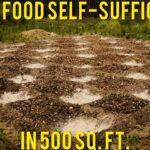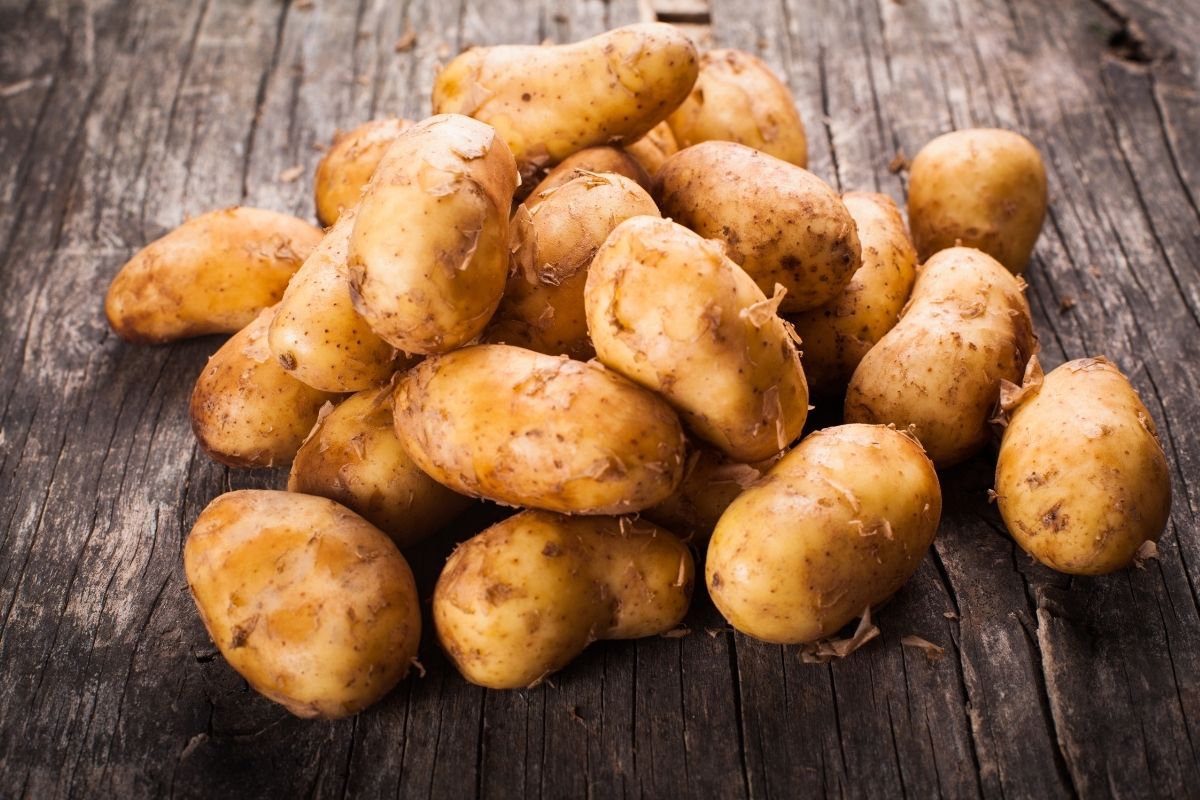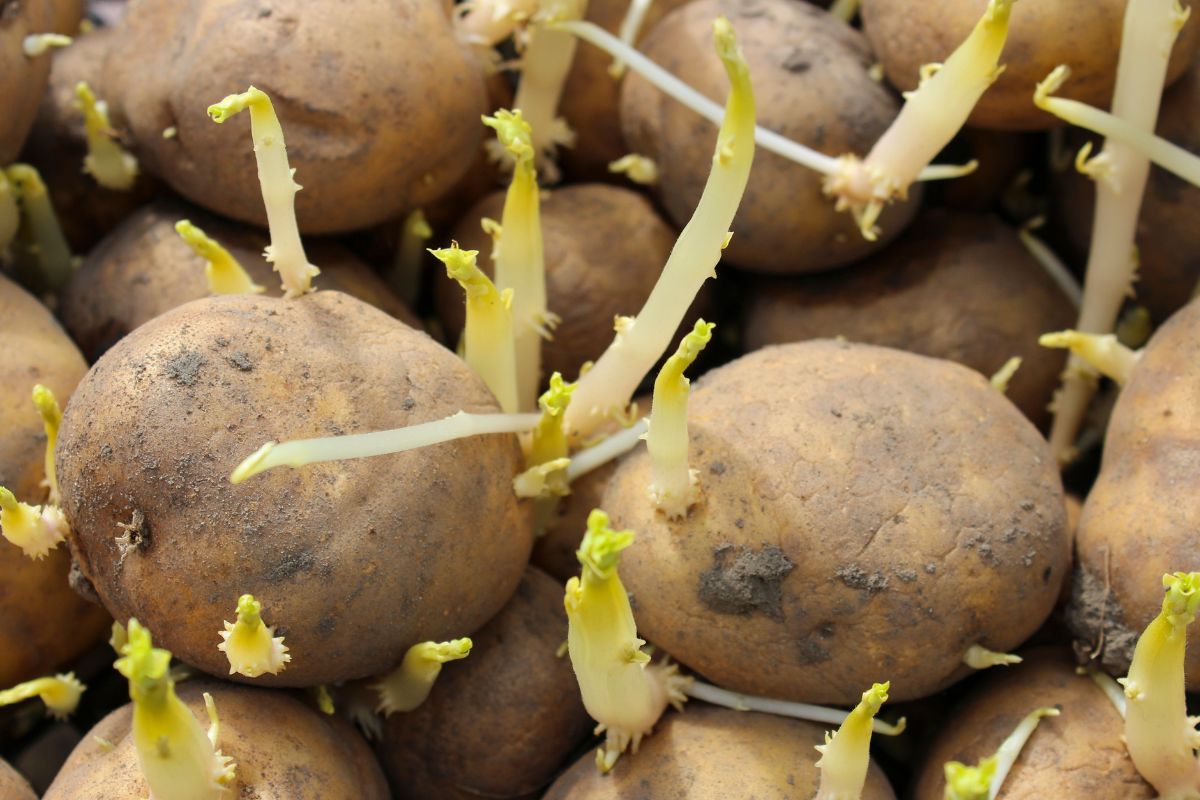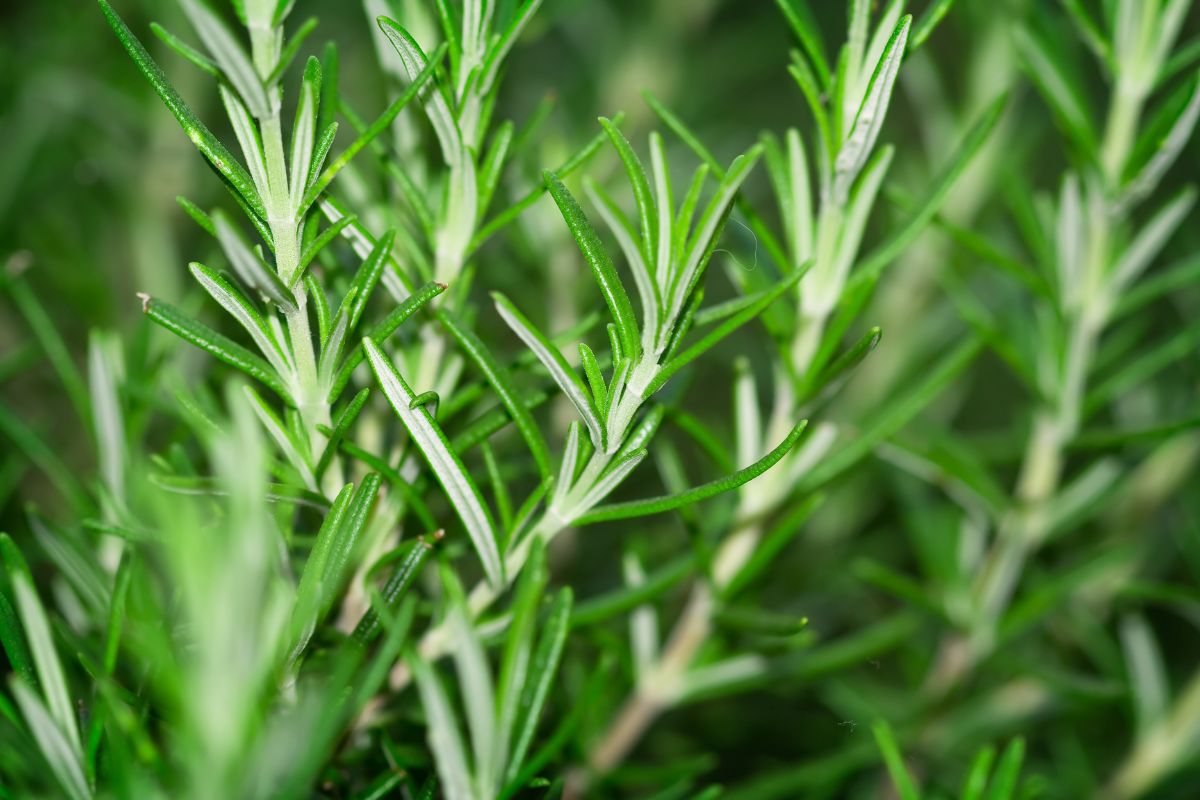what if i told you there was a way to produce
200 potato plants from a single tuber it's called the pull out er pull sprout method also known as
sprout jacking seriously this is for youtube right the pull sprout method is a technique for the
rapid propagation of potatoes and other tubers and is sometimes used by breeders to rapidly
increase the quantities of the rarest varieties but it can also be used by gardeners who have
limited access to seed potatoes or by growers who have limited means to produce all of the plants
that they require from just one or two potatoes some sources suggest that pull sprouts can
be used to limit the spread of disease from either home-grown or store-bought potatoes
of course this is never going to be as effective as the micro propagations
that are taken in sterile laboratories for the commercial potato industry but it's
another tool in our arsenal as home growers the pull sprout method depends on a peculiar trait
of potatoes and other tubers whereby each eye on the potato contains multiple buds and once the
dominant sprout is removed the other buds awaken that's how some growers report getting 200 plants
out of a single tuber most growers plant whole or cut potatoes in pots or shallow trays soil is
important to encourage the sprouts to root but i had to take it a step further you see i'd learned
that people especially during the great depression would grow their potato plants from just the
peels so that they could still eat the tubers i wanted to see if i could combine these two
techniques so that i could maximize the number of plants i get while also maximizing the food
value of my tubers and because i'm notorious for forgetting the water potted plants i decided to
make myself a little diy self-watering planter so that this could be a project that i could
basically set and forget until planting time for the self-watering planter you're going to need
a container preferably one that you can drill a drainage hole in but i've got a workaround if you
don't a plastic cup with three or four slits cut into the sides gravel glass beads or some other
kind of drainage material to fill the reservoir an old t-shirt rag landscape fabric burlap sack
or some other kind of material that you can place in between the water reservoir and your potting
soil and then you're going to need your potting soil or compost of choice in order to fill up the
planter if you cannot add a drainage hole to your container then you'll also need a thin strip of
cardboard that's at least as long as your pipe to act as a dipstick to construct the
self-watering planter place your cup with slits in one corner of the container and place your pipe
in the opposite corner start adding your gravel or other drainage material up to the level of the
cup on top of the gravel you'll want to add your old t-shirt or burlap or whatever barrier you're
using be sure to snug it in around the cup and the pipe as well as you can although perfection
isn't important just make sure that most of the soil isn't going to fall down into the gravel then
fill up the cup with your compost or potting soil and then add another layer maybe an inch or
so into the planter to cover up the barrier if you're adding a drainage hole to your planter
you'll want to drill a hole in the side of the container just below the level of the gravel if
you're not adding a drainage hole then what you want to do is put your strip of cardboard
down into the bottom of the container and mark a line just below the level of the
gravel this will allow you to check the level of the water as you're adding it to
the reservoir now add water through the pipe and if your potting medium isn't already fairly
moist then you may need to add some additional water on top just to prime the wicking action
of the planter now let's prep the potatoes welcome back to binging with stoned
ape and today we're going to discuss how to prepare potatoes to grow pull sprouts
from the peels we're going to need one or more potatoes with or without the sprouts and
we're going to need a good clean kitchen knife let's get started first you're going to want
to inspect the potato and especially here on the ends we want to be careful to cut them
off and leave as many buds intact as possible and we'll go ahead and do the other end
sometimes it can be a bit of a weird angle this will work just fine and once we have those
separated it's time to turn the potato up on end now we just want to carefully
take slices down the sides again being careful to keep as many buds intact as
possible and you want to do a fairly thick slice we want to keep as much flesh on to support
the growing sprouts as possible but we still want to leave some potato left to eat at the end
we're going to continue around the potato like so and before you know it we are done
this can be cubed up as one will for cooking later what we're after right now are
these peels now that the potatoes are prepped just add a layer of peels to your planter and
then add a fine layer of soil over the top if you've decided to go with a pot or a tray go
ahead and add your layer of peels just the same and make sure to keep the soil slightly
damp there are no leaves and roots yet so you don't want to get it too wet otherwise
your peels might just rot if you're a little extra extra like me then you can continue to add
layers of potato and layers of compost on top just know that it's going to make the next
step a little bit trickier eventually your peels will sprout and your spouts will form
roots and at that time you can remove them look at those roots then it's time to plant them
if you've still got a bit of time before your weather warms up then you can pot them up and
hang on to them until it's time for them to go in the ground did i mention that i'm really bad
at remembering to water potted plants as you can see some of the lower leaves here have dried up
and fell off because i missed a few waterings but as we can see it's developing some pretty good
roots the ones that i left in the self-watering container started to get a little bit leggy so
what i've done is i've gone ahead and trimmed them off often i'm just seeing if i can get them
to root in water like their cousin the tomato another thing that i'm experimenting with is
removing the sprouts that are starting to form on store-bought potatoes and just seeing how
they'll root in water rather than trying to grow whole sprouts in soil you can see
that they're starting to form roots here's the small patch that i set aside for
growing pull sprouts separately from my andean potato breeding project which i mentioned
in my video on growing everything on contour those will be grown from true potato seeds here
i've got our hiding in the shade because it's hot here i've got the fresh pull sprouts that
we took today as well as our little uh potted guy let's uh get them in the ground and
show you how that goes so what i've done here is just pulled aside the mulch and because
the pull sprouts are kind of thin and don't have a lot of roots on them what i like to
do is use a screwdriver and just put a nice deep hole in there and wiggle it around and make
it nice and wide give them plenty of room to go in and then just take the pull
sprouts and drop it in the hole and get as deep as i can get a little bit of
compost here i'm going to fill in around it and then pull the mulch back in around the potato
for a potted guy it's got a little bit bigger of a root system so i'm going ahead and use this
trowel here to dig out a nice little hole for it and we'll just drop him in the ground and fill back in around with some of the
soil that we removed then i'll add some some of that compost to round it out just pull the mulch back in around
and then water it in really well and this guy should be happy pull sprouts are a
great way to stretch your dollar or conserve rare varieties hit the subscribe button now to find
out how the yields of these pull sprouts compare to traditional planting techniques as well as
find out how i rapidly propagate other lost income crops like oka moshua and uyuko thanks for
watching have a good one subscribe to the channel now for future permaculture experiments and then
select one of these videos to continue the journey

- Pull Sprouts: 1 Potato Peel, 200 Plants - July 6, 2022
- lumbung calling: Local Anchor - July 6, 2022
- Production of Biodiesel From Vegetable Oil - July 6, 2022







